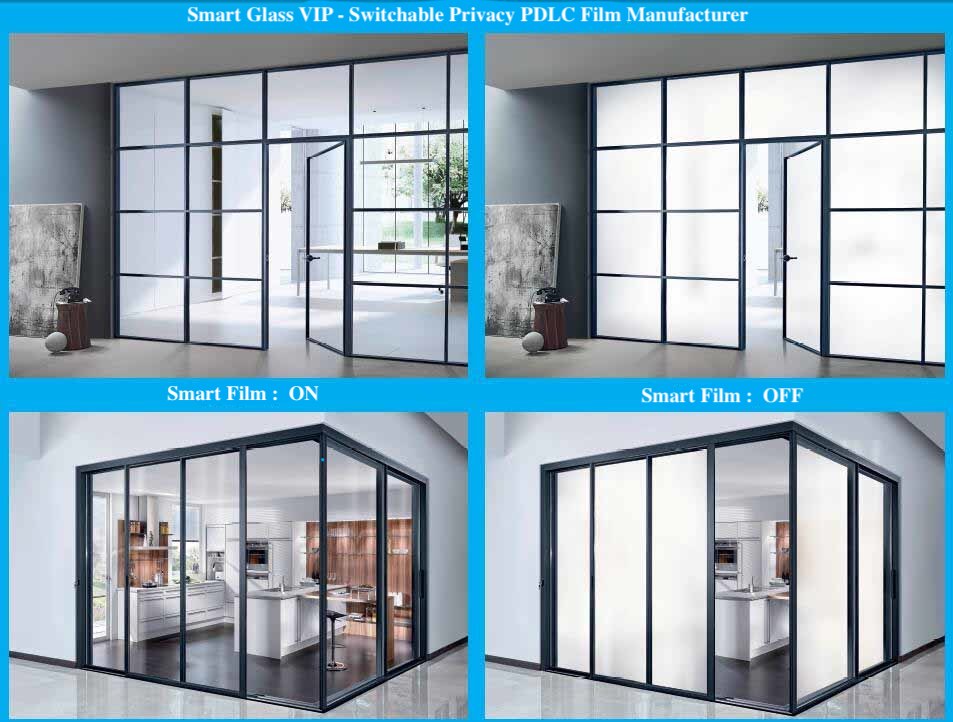The principle behind electronic PDLC or Polymer Dispersed Liquid Crystal smart film is quite simple—but just as fascinating. When you turn the power off in an electrochromic glass film, liquid crystal molecules float in a random orientation, scattering incidental light and rendering the film-filtered glass panel opaque. When an electric current is applied, on the other hand, the liquid crystal molecules become aligned, allowing incidental light to pass through so that the other side of the glass becomes visible.
PDLC smart film finds excellent use in privacy glasses. These are laminated materials that react to electrical current. In the film’s “on” or electrically charged state, the liquid crystals within the film instantly line up, causing the glass to become transparent. When the power is switched off, the liquid crystals quickly return to their randomly oriented, scattered state, making the glass opaque translucent. In the film’s “off” state, the liquid crystals within the film have a refractive index that is different from that of the polymer matrix, which causes its translucent appearance.
The PDLC medium has a light-scattering power that is adjustable by applying an electrical field. In its natural, uncharged state, liquid crystal droplets in the polymer matrix randomly align. PDLC smart film consists of liquid crystals dispersed in a polymer matrix that is further enclosed by an electrically conductive ITO PET film (Indium Tin Oxide coated film). The resulting electrochromic glass film is capable of accommodating electric wiring, which is attached to a bus bar or a conductive copper strip, located along the edge of the film. In low voltage platforms, this electrical wiring requires a step-down transformer, which serves to supply power to the film for its “on” or clear state.
The PDLC film is sandwiched between two laminating glass sheets, and these components are assembled under high temperature and pressure to create a single unit.



